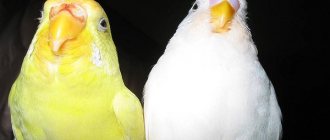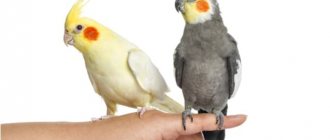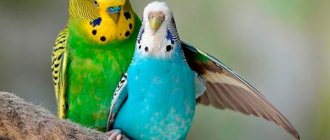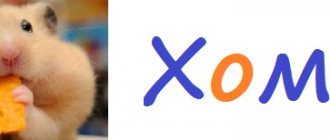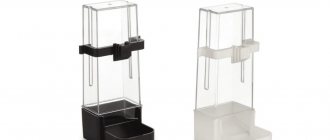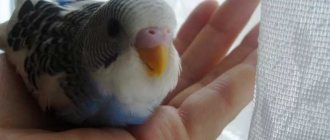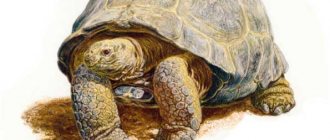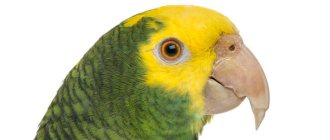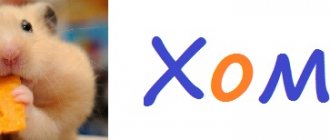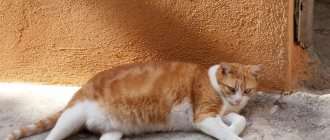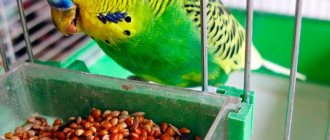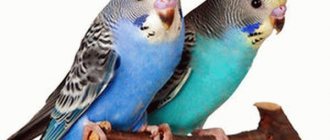Budgerigars are active and inquisitive birds. At home, they do not require complex care and are able to quickly adapt to the environment. An important role at the initial stage is played by the ability to correctly determine the sex of a parrot. Males and females behave differently not only in everyday life, but also towards their wavy counterparts.
To learn to recognize the sex of parrots, you need to study their differences in external characteristics, and know the behavioral features that are characteristic only of females or males.
Why do you need to know gender?
An accurate determination of gender makes it possible to resolve a number of issues that will help avoid annoying mistakes and disappointments in the future, namely:
- Pet's name . When a chick gets into the house, he needs to immediately be given a nickname, and repeat it every time he calls. The more often a parrot hears its name, the faster it will begin to respond to it. If the nickname does not correspond to the gender, then suitable replacements will have to be found.
- Number of birds in one cage . Males live together in harmony, but females are aggressive towards their sex and perceive their neighbor as a rival. Therefore, in one territory you can keep either only males or individuals of different sexes. The female is always placed next to the “groom”.
- Character and behavior . Females tolerate loneliness more easily; they are comfortable alone with themselves. Males, on the contrary, love attention and communication, become tame faster and are more willing to make contact. They chirp and create much more fuss and noise than females.
- Ability to learn . Males master speech techniques more quickly than females. Females pronounce words more clearly, but learning usually requires more patience and time.
- Getting offspring . It is especially important not to make a mistake with the sex of the bird when chicks are expected to appear in the future. For nesting you need to create certain conditions. All efforts will be in vain if the parrots turn out to be of the same sex.
In spring and autumn, females experience a hormonal surge. Then their temperament and behavior change dramatically, they become restless, noisy, and sometimes aggressive. When hormones return to normal, the birds calm down.
Life expectancy of budgerigars
The average lifespan of a budgerigar is about 10 years. It should be borne in mind that after 5 years the size of the bird is practically unchanged. The issue of age is important when buying a pet: if you choose a young chick, it will be easier to tame it and teach it to speak. In order for your budgerigar to live a long life, you should ensure:
- nutritious and varied nutrition;
- attention from the owner;
- regular walks outside the cage.
After 6 months, noticeable differences between the chick and the adult are erased and determining age becomes more difficult. In such a situation, it is possible to notice only an old or sick bird - distinctive signs may be present in the form of passivity in behavior and markings near the eyes. Ornithologists sometimes emphasize that in older individuals the pupils may have a pronounced white edging.
Differences between chicks
Parrots have a pronounced formation above the beak around the nostrils - a cere. Its color determines the sex of chicks at the age of 3-4 weeks. This is the main distinguishing feature for young individuals.
The cere of a female chick has the following differences:
- the color is soft blue, light lilac or with a purple (pink) tint;
- a light or white edging is clearly visible around the nostrils;
- the color is heterogeneous, shades are always present (with the exception of albinos and show breeds).
The cere of a male chick:
- color purple or with a bluish-turquoise tint;
- the circles around the nostrils are absent or their edges are blurred and have a bluish tint;
- uniform color.
Pink and purple color of the cere occurs in chicks of both sexes. In these cases, you need to look at the circles around the nostrils and the uniformity of color. This coloring is found in lutinos, albinos and other mutation species of parrots.
In chicks, the color of the cere may change throughout the day. To accurately determine the sex, breeders recommend taking several photos at different times of the day, and then carefully examining the shades.
What is a cere
The cere is an area of smooth thickened skin located at the base of the beak and devoid of feather cover. Here are the nasal openings through which the parrot breathes. The olfactory cells located inside them allow the parrot to sense odors and locate their source. Under the thickened skin there is a ligament that movably connects the beak with the bones of the skull. Thanks to this, the parrot can use its beak to move, grab large objects and chew hard food.
Determining the sex of adults
Budgerigars become adults early. Already at the age of 3.5-4 months, the first molt takes place, and the cere acquires a permanent color. From this period on, it is much easier to determine the sex of the pet. There are several ways, each of which will help avoid mistakes.
By wax color
When the formation above the beak acquires a stable color, the following colors are characteristic of each sex:
- In females, as they mature, the cere becomes beige or pale brown. The circles around the nostrils remain light or white. The structure becomes uneven or rough. During the nesting period, growths may appear on the wax, which disappear after the chicks hatch.
- In males, the beak is bright blue, monochromatic. If there are circles around the nostrils, they are fuzzy and have a blue tint. The surface of the wax is smooth.
The exceptions are lutino and albinos. Their beak remains pink, and the sex is determined by the structure of the cere. In females it is rough, in males it is smooth.
If the beak is severely peeling, has suddenly darkened, or suspicious growths have appeared, the bird is sick. In such cases, it is important to consult a doctor immediately.
By behavior
Each gender has certain behavioral characteristics. By observing a parrot, you can find out its gender. This method does not exclude the possibility of error, so it should be used after studying the wax, as an additional factor.
The male can be recognized by the following characteristics:
- often chirps and makes noise, sings loudly and loudly;
- always rejoices at his brothers, no matter what gender the neighbor is placed with him (if it’s a female, he will flirt and take care of him, and he will play and be friends with the male);
- loves sound toys, tends to leave the cage and fly more often;
- during mating games (or when he imitates them), he always appears on top of the female or an imaginary partner and puts his paw on her;
- he is able to feed the female with food, which he puts in the crop in advance;
- is sociable, readily and easily makes contact, quickly becomes tame;
- When interacting closely, it does not bite much, but can only lightly bite the hand or fingers, flirting with the owner.
The female is characterized by different behavior, namely:
- she is not loud, makes sounds infrequently and muffled, if she sings, then quietly and measuredly;
- will only accept a male; he will offend his rival and try to get her out of the cage;
- when walking, he likes to watch what is happening from the side, flying from place to place to choose the best position for viewing;
- during the mating season she becomes restless and aggressive, then it is better to leave her alone for a while;
- often gnaws on perches, cage bars and other objects - this behavior is due to the fact that in the wild it is females who can hollow out hollows for nests with their beaks;
- does not seek attention, prefers to spend more time in the cage - busily putting things in order in his home or cleaning his feathers.
Unlike males, “girls” bite painfully, especially during a hormonal surge. Females usually treat mirrors calmly, while males can hover around them constantly.
Ornithologists have long debunked the myth that male budgerigars have brighter and more colorful plumage. Thanks to selection, the colors of the feathers of the females of many species have become as diverse as those of the “males”. Therefore, it is a mistake to be guided by this criterion in determining gender.
Genetic method
Certain species of budgerigars that have been created through gene mutation are available for genetic analysis. In such individuals, the number of chromosomes in females and males is different. This method can only be applied when the breeds of both parents are known.
At birth, a chick inherits a phenotype that is formed according to the characteristics of its mother and father. Common types of mutation breeds are as follows:
- opaline;
- brown;
- lutinous;
- albino;
- lacewing;
- Texas Celandine;
- slate.
Based on the data of occurring mutations, it is possible to accurately determine the sex of a chick that has barely fledged. For example, when the father is opaline and the mother is of a different species, then all the “children” with opaline feathers will be females, and those with a different color will be males. Or a brown father and a mother of a different breed will have all the brown chicks female.
Experienced breeders prefer to determine the sex of their offspring using the genetic method, since it is second only to DNA testing in terms of reliability.
DNA test
The most accurate way to accurately determine the sex of a parrot at any age. To carry out the analysis, a swab from the “patient” is taken from the anus or feathers, which are sent to the laboratory. This method has only two drawbacks:
- High price. A DNA test often costs more than a parrot.
- Limited access. Clinics where research can be carried out are usually only available in large cities or regional centers.
The opinion that the gender of parrots can be recognized by the color of their paws, beak or “beads” on their necks is wrong! For each species, they can be of different shades, change with age or remain the same. It will not be possible to correctly determine the sex of the bird from them.
Alternative Methods
Sometimes the sex of a bird is determined by observing sexual intercourse or its imitation. The female budgerigar is on the bottom. The male has a tendency to place his foot on his partner or any suitable object.
How to distinguish a female and a male budgerigar by behavior? If the bird is curious, observant and likes to clean up its cage, it is definitely a female. Girls often bite, and noticeably. The peak of their aggressiveness occurs during the period of hormonal surge. Males are calmer in this regard; their bites are more indicative. Girls take a long time to learn to speak simple words, and boys sing complex songs.
To determine the sex of a budgerigar, you should look at the shade of the pet's wax. Expensive methods, such as DNA analysis, are used to study the bird's characteristics in detail. Knowing the characteristics of the behavior and appearance of parrots of different sexes, gender is determined independently with maximum accuracy.
If you liked the article or have something to add, then leave your comments and also join our VKontakte group.
Who is better to choose: male or female
Females and males have their own advantages and characteristics. First you need to decide for what purposes a pet is needed in the house, and in what conditions its life will be spent. When the task is clear, the choice is easy to make.
In what cases is it better to purchase a male:
- when the owners are often at home, rarely go on business trips and are ready to devote a lot of time to communicating with the pet;
- if you want a talkative friend to appear in the family;
- so that there is more than one parrot, but at the same time eliminate the risk of offspring;
- if there are small children in the house who are ready to communicate with a feathered pet (the female can bite painfully).
The female must be selected under the following circumstances:
- when there is already a male who needs a girlfriend, and the household members are ready for the fact that chicks may appear;
- if the owners do not like a lot of noise and are rarely at home (females tolerate loneliness more calmly);
- in cases where the owners do not care whether the parrot will talk or not (females are not as sociable and talkative as males).
When the task is to purposefully breed parrots, then you need to choose birds of any sex from different breeders. Because in one place a male and a female may end up from the same parents, and they will not be able to produce healthy offspring.
Treatment
Treatment should be prescribed by a veterinarian after examining the bird and making a diagnosis. In some cases, to normalize the parrot’s condition, it is enough to change the living conditions (length of daylight, air humidity) and diet (introduce vitamin and mineral supplements, fresh vegetables, fruits and herbs). For more serious diseases, the use of special medications will be required.
For knemidocoptosis, aversectin ointment or boric vaseline is applied to the affected areas. In case of necrosis, the nasal passages are washed and pus is removed, after which the bird is prescribed antibiotics. For all diseases accompanied by dryness and excessive growth of the horny substance, it is useful to lubricate the wax with sea buckthorn or vaseline oil.
Recommendations
To eliminate errors, the sex of the parrot must be determined by several indicators, proceeding in the following order:
- Examine the wax on a young or adult bird.
- Take a series of photos if the parrot is young, and examine the shades of the beak and the circles around the nostrils.
- Observe the behavior of the bird alone and in communication with other parrots (if he is not alone in the cage).
- Listen to the sounds it makes - males make more noise and sing louder.
An important point is not to make hasty conclusions based on one indicator. There are many varieties of birds, and each bird, in addition to its physiological characteristics, also has its own character.
Budgerigars can live at home for 12-15 years. Therefore, it is important to immediately correctly determine the gender of a future family friend. To do this, you need to study its external features and behavioral characteristics in order to provide it with a decent life in the future and enjoy communicating with your pet.
DNA analysis
Expensive DNA testing requires a parrot feather or a swab. It will help to distinguish the sex of parrots unmistakably. The procedure is also carried out in order to get to know the bird’s body more deeply, at the genetic level. These are also hereditary diseases that can be corrected with proper nutrition.
The only disadvantage of this method is the high price. They usually go to do DNA tests on large, expensive animals with whom the future owner intends to spend his entire life, and for this you need to know all the “ins and outs” of the pet.
Is your parrot sick?
Improper care and handling of birds can cause the development of scabies, poisoning, inflammation of the goiter, damage to limbs, or infestation with down-eaters.
Signs of the disease for which you should immediately contact an ornithologist:
- ruffledness;
- refusal of food;
- loose stools;
- growths on the beak, around it, on the legs;
- discharge from the nostrils;
- lethargy and inactivity.
Laboratory method
The most reliable, but expensive and rarely used method. To do this, feathers, skin or other tissue must be taken to a genetic laboratory so that specialists can conduct a full analysis.
In this case, you can find out a lot of useful information not only about the gender, breed or lack thereof, and the ancestors of your pet, but also about hereditary diseases or other genetically programmed characteristics of the bird’s body.
Genetic method
In some cases, the chick's appearance is inherited from only one parent. In this case, it is possible to establish sexual differences with certainty, knowing certain rules of inheritance.
First, you need to describe the possible color options for budgies in order to better navigate the issue:
- opaline (virtually no “waves” on the back between the wings);
- flashy (wave patterns are brown);
- Albino (bluish-white plumage - a rare mutation of blue color);
- Lutino (yellow uniform plumage, essentially a mutated green feather gene);
- Lacewing (yellow and white plumage with brown “waves”, lack of pigment in the iris);
- Texas Celandine (“diffuse” coloring appearing only on the lower part of the body);
- Slate (gray-turquoise color).
Knowing the color of the parents and the desired color of the chick (A), you can calculate the probability of a different color (B).
The following options are possible:
- Father A and mother A - all the chicks will be A, it will not be possible to find out the sex of the babies in this case.
- Father B and mother B. Females of type A, type B may be born - females and males. It is possible to reliably establish gender only in subgroup A.
- Father A and mother B. All individuals A will be born females, and B - males. The most successful example of the genetic method.
- Father B and mother A. If the father does not carry the hidden A gene, the litter will contain only B individuals, the sex of which cannot be determined.
The method is complex and can only be done when raising several generations of birds.
According to body shape
Based on the general structure of the skeleton and the outline of the body, it is also possible to determine the gender of the parrot.
According to the shape of the head
You need to have a very “sharp” eye to notice the difference. This method is more suitable for experienced poultry farmers.
The shape of the head of the “volnushki” is distinguished by the following characteristics:
- the male has a flat crown, as if aligned with a ruler;
- the female has a pointed forehead, and the back of the head is smoothed, even slightly flattened.
This method is good because it can be used for a pet of any age: chicks have the same head shape as mature individuals.
By the paws
The color of the paws is an unstable indicator that can change depending on the state of health and well-being. However, in combination with other methods, this method can serve as confirmation or refutation of a previously made determination.
There is such a dependency:
- males have bluish paws;
- The legs of females are colored pinkish.
However, you need to understand that the color of the skin on a bird’s legs can change due to illness or injury.
Cheek spots
This sign is more often applicable to birds with “roddy cheeks,” which include cockatiels and lovebirds. As with all birds, the males of these species are more brightly colored, so their cheek spots are more pronounced (orange, red and pinkish) compared to the females. Individuals can also be distinguished by the red edge of their blush.
In females, the cheeks are paler and more inexpressive; the characteristic blush begins to appear only at the age of 4-5 months; before this, the feathers on the face can be gray or yellowish-white.
Criteria for choosing a cage
When approaching the question of choosing a home for a bird, consider the following factors:
- cell shape. A rectangular one with a flat roof would be ideal. It makes it easier for the parrot to move around and it will be easier to hang toys.
- size. Remember, the bird must freely straighten its wings and move around its home.
- twigs. To prevent your parrot from sliding along the walls, try to purchase a cage with twigs arranged horizontally.
- care and cleanliness. For ease of cleaning, choose a cage with a simple design. You need to clean every day, and do a general cleaning every month. You can disinfect the cage with chamomile infusion or wormwood infusion.
- safety. To prevent your bird from breaking its leg between the bars, buy a cage with a flat bottom.
